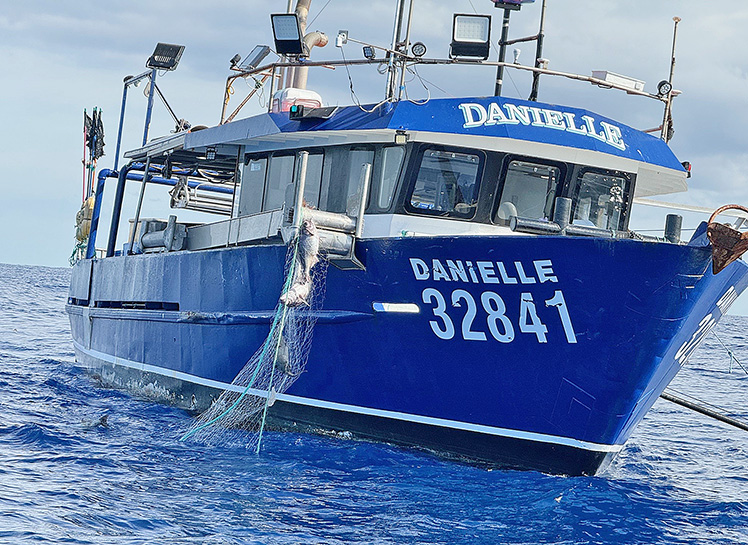Gillnetting around White Island causes uproar

GILLNETTING: Tauranga-based fishing vessel Danielle retrieves gillnets catching spawning bluenose on one of the knolls near White Island on March 22. Photo supplied
Contributed
- The arrival of a Tauranga-based, 18.95-metre fishing vessel deploying gillnets in the Whakaari-White Island area has caused an uproar among local recreational fishers and charter boat operators.
NETS of lengths of up to 500m have been set over knolls (underwater mountains) targeting bluenose but also catching other species that inhabit the reef areas.
The knolls, close to White Island, are popular areas for recreational and charter boat fishers targeting bluenose, bass, gemfish, kingfish, tarakihi and hapuka.
Although the fishing operation is legal, gillnetting over reefs is not considered a sustainable fishing method and therefore banned in many other countries.
Gillnetting over deep-water reefs has mostly stopped due to its non-selective action, catching other non-target species.
Also, nets can get caught on the bottom and lost when set over a rocky ground or reefs.
Lost nets, or parts of nets, can keep on killing fish and make it impossible for recreational anglers to fish the area due to hooks tangling in the lost gear. In deep water, lost nets do not break down.
There are areas around White Island where nets lost more than 20 years ago are still preventing line fishing due to them snagging hooks and sinkers.
Of particular concern (this season) was the setting of nets targeting bluenose while they were congregating to spawn over the top of the knolls. Anglers have noticed a decline in catch rates coinciding with this gillnetting activity.
On May 29, 2024, representatives for the Whakatāne Sportfishing Club and charters vessel operators travelled to Tauranga to discuss their concerns with the operator of the gillnetting vessel and representatives for Moana New Zealand, who own the quota and buy the fish.
At the meeting, the commercial people were asked if they would refrain from fishing the knolls closest to White Island that are in range of smaller recreational and charter fishing boats.
The commercial group would not agree to avoid fishing over any of the area requested. They did offer to not increase their catch rates above the current yearly tonnage landed in the White Island area.
The meeting concluded with unanimous agreement that the fishery is in decline and all stakeholders needed to work together to rebuild the fishery.
Of real concern is that due to the decline in the bluenose fishery, only 61 percent of the total allowable commercial catch was harvested last season in our quota management area.
The majority of the 140 tonnes caught commercially was exported.
Clearly, there needs to be some urgent discussions between the Ministry for Primary Industries, commercial, and recreational fishers to change the management of our bluenose resource before stocks become so low that they cannot recover.
Fishing around White Island is restricted for smaller recreational vessels due to the limited number of days when the weather is suitable to travel that distance offshore.
However, recreational fishing, including charter vessels, do have an impact on the fishery.
Therefore, we are in the process of preparing a survey to gather data about recreational catch numbers and the impact of gillnetting.
The survey will be emailed to members of the Whakatāne Sportfishing Club.
If you are not a member of the club and would be willing to respond to the survey, please send your email address to [email protected]
– Heyden Johnson, Whakatāne Sportfishing Club president
– Mike Boswell, owner/operator of The Gambler Fishing Charters
– Nigel Merry, recreational fisher and ex-charter boat owner/ operator